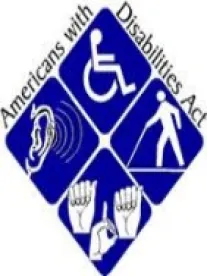In 2019, we are poised to learn where the Fourth Circuit stands on reassignment as an accommodation—an issue that has split the Circuits.
Before discussing where courts are divided, let’s start with the consensus. First, the Americans with Disabilities Act (“ADA”) clearly requires employers to make reasonable accommodations to the limitations of an employee with a disability unless an employer can show that the accommodation would impose an undue hardship. The statutory text of the ADA states that the term “reasonable accommodation” may include “reassignment to a vacant position.” 42 U.S.C. § 12111(9)(B). Thus, if during the interactive process an employer is unable to identify a reasonable accommodation that will enable an employee with a disability to continue performing the essential functions of his or her current job, an employer may need to consider reassigning the employee to a vacant position—often referred to as the accommodation “of last resort.” It is here, when we get to the meaning of “reassignment,” where courts diverge.
Does reassignment mean that the employee seeking accommodation gets the vacant position if he or she is qualified for it? Or, does the ADA only require that the employee be allowed to compete equally with other applicants for the position? Or, is the answer somewhere in the middle?
The Supreme Court has held that, in the run of cases, an employee with a disability seeking an accommodation is not entitled to a vacant position over a worker with superior rights to bid for the job under an employer’s seniority system. US Airways, Inc. v. Barnett, 535 U.S. 391, 403 (2002). The Supreme Court, however, has not addressed the rights of an employee with a disability seeking a reassignment outside this seniority system context.
A recurring, critical question is whether an employee with a disability seeking an accommodation is entitled to a vacant position over someone more qualified for the job, particularly when an employer has a practice or policy, like most employers do, of hiring the most qualified person for the job. According to the Equal Employment Opportunity Commission (“EEOC”), reassignment means the employee with the disability seeking reassignment gets the vacant position if qualified for it even if another individual is more qualified. EEOC, Enforcement Guidance: Reasonable Accommodation and Undue Hardship Under the Americans with Disabilities Act (Oct. 17, 2002).
Circuit Courts of Appeals are split on this issue. Compare Huber v. Wal-Mart Stores, Inc., 486 F.3d 480, 483 (8th Cir. 2007) (“[T]he ADA is not an affirmative action statute and does not require an employer to reassign a qualified disabled employee to a vacant position when such a reassignment would violate a legitimate nondiscriminatory policy of the employer to hire the most qualified candidate.”), and EEOC v. St. Joseph’s Hosp., Inc., 842 F.3d 1333, 1346 (11th Cir. 2016) (“Requiring reassignment in violation of an employer’s best-qualified hiring or transfer policy is not reasonable ‘in the run of cases.’”), with EEOC v. United Airlines, Inc., 693 F.3d 760, 761 (7th Cir. 2012) (“[T]he ADA does indeed mandate that an employer appoint employees with disabilities to vacant positions for which they are qualified, provided that such accommodations would be ordinarily reasonable and would not present an undue hardship to that employer.”), Smith v. Midland Brake, Inc., 180 F.3d 1154, 1169 (10th Cir. 1999) (en banc) (“[R]equiring the reassigned employee to be the best qualified employee for the vacant job is judicial gloss unwarranted by the statutory language or its legislative history.”), and Aka v. Wash. Hosp. Ctr., 156 F.3d 1284, 1304 (D.C. Cir. 1998) (en banc) (explaining that the word “reassign” in the ADA’s statutory text “must mean more than allowing an employee to apply for a job on the same basis as anyone else.”).
In Lincoln v. BNSF Ry. Co., 900 F.3d 1166, 1205 (10th Cir. 2018), the Tenth Circuit recently reiterated its position that “in most situations, an employer must award the [vacant] position to the disabled, but qualified, employee.” The Tenth Circuit, however, explained that an employer’s policy of hiring the most qualified applicant for vacant positions is relevant and an “employer could point to its policy and argue that while the employee was technically qualified for a given position, the employee’s qualifications for the position fell significantly below the qualifications of other applicants such that reassignment is not reasonable or would place an undue hardship on the employer.”
The Fourth Circuit Court of Appeals, like several other Circuit Courts, has never squarely addressed this issue, but it could soon because of an appeal pending in Elledge v. Lowe’s Home Ctrs., LLC, No. 5:16-cv-00227-RJC-DCK (W.D.N.C. Dec. 20, 2018). Elledge sought reassignment to multiple positions after his knee condition left him unable to perform the essential functions of his current job, which required frequent traveling, walking, and standing. Lowe’s, like many employers, had a hiring policy requiring that jobs be posted and that individuals apply and compete for vacant jobs. While Elledge applied for multiple vacant jobs, the evidence showed that Elledge did not obtain these positions because other applicants were more qualified.
Elledge brought suit alleging that Lowe’s violated the ADA by failing to reassign him to the vacant positions sought. The district court dismissed Elledge’s claims on summary judgment. The district court explained that Elledge “should not have enjoyed a privileged status in the job application process . . . . He was required to adhere to Lowe’s standard policy and compete on equal footing with other employees and outside applicants.” Elledge recently appealed the decision, and a ruling from the Fourth Circuit should come later this year.
Given the Circuit split on the extent of an employer’s obligation to reassign an employee with a disability to a vacant position as a reasonable accommodation, the Supreme Court may soon resolve this issue should the appropriate case come before it. Until then, employers should stay up to date on the evolving law in the jurisdictions where they operate and consult with legal counsel when considering reassignment as an accommodation.




 />i
/>i
